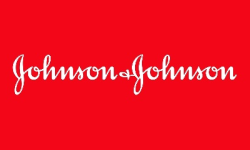
Global Desk Phones Market by Type (IP Desk Phones, Digital Desk Phones, Wireless Desk Phones, SIP Desk Phones, VoIP Desk Phones), By Application (Corporate Offices, Hospitality, IT And Telecom, Healthcare, Government, Others) and Region (North America, Latin America, Europe, Asia Pacific and Middle East & Africa), Forecast To 2028
The desk phone market is projected to grow by a CAGR of 2.5% from 2021 to 2028. The increasing demand for VoIP (Voice over Internet Protocol) enabled desk phones is expected to drive the market in the next few years. Moreover, with an increase in the number of employees working remotely and thus requiring remote access, IP-enabled desk phones are also gaining popularity.
A desk phone is a device that can be used to make and receive calls over a wired or wireless connection. The devices have their own speakers, microphones, keypads, screens, and other features including call forwarding options, conference calling capabilities, etc.
The technology for these telephone has been around since the late 1800s but with the introduction of newer technologies such as VoIP (Voice over Internet Protocol) enabled phones they are now more widely accessible than ever before. Desk Phones can connect to networks using analog lines, digital lines, or even via broadband connections such as satellite internet which means that virtually any location can be connected by this type of product regardless of geographic position.
On the basis of type, the desk phone market is segmented into IP, digital, wireless, and SIP.
IP Desk Phone
IP desk phones are connected to a network using an IP address rather than just by physical connection. This means that the office or company can be virtually anywhere and still connect with their colleagues, partners, etc as they would in person - without any of the drawbacks such as not being able to see them at all.
This type of phone is particularly useful for companies who need to work remotely because it allows workers to stay connected while working from home or traveling internationally for example which makes collaboration easier and more convenient both physically and digitally whilst reducing travel costs. It also helps employees form closer connections with each other meaning that co-workers become friends instead of simply colleagues thanks to shared experiences through video chat sessions.
Digital Desk Phone
Digital Desk Phone is a type of telephone which supports digital signaling and encoding. Digital desk phones are more often used in offices, hospitals, or other environments where analog lines cannot be used.
These types of phones can operate through an IP network with VoIP-enabled phones that use the internet protocol to make calls rather than traditional landlines like POTS (Plain Old Telephone Service). Calls made over these networks may incur additional charges from their service providers but they provide several benefits such as mobility for both people making and receiving the call and also lower installation costs. The major tradeoff with using these systems though is that while it provides a clearer sound quality due to less noise interference there will be some latency on the line because it takes longer information to reach the destination.
Wireless Desk Phone
A wireless desk phone is a desktop telephone that uses either radio waves or infrared signals to transmit sound from the user's mouth to another device. The term "wireless" in this context does not refer to the absence of wires, but rather means that there are no cords connecting it directly with an external power source (although some models have been designed both for battery operation and as cordless phones). This type of desk phone can be used without being physically connected to any particular location on a wired LAN; moreover, they may also work at distances up to 300 feet away from the base station or up into outer space - so long as these devices provide coverage within those areas. Some devices allow multiple calls and features such as music-on-hold, call transfer, and conference calls.
SIP Desk Phone
SIP desk phones are a type of IP phone that connects to VoIP networks. They offer the advantages of both SIP and analog solutions but do not have the disadvantages or limitations imposed by digital telephones (such as lack of network scalability). In most cases, they can be used with any web browser from anywhere in the world.
On the basis of application, the global desk phones market is segmented into corporate offices, hospitality, IT and telecom, healthcare, government agencies, etc.
Corporate Offices
The application in corporate offices is to provide VoIP desk phones for staff members, and the connection of these devices usually does not require direct access to a PBX (private branch exchange) or phone switch. The network operator will include an IP-PBX service that requires a broadband connection from end users' telephones through the building's wiring system while also providing additional features such as conference calling, call transfer, music on hold, faxing capabilities, and voicemail.
Hospitality
Desk phones are typically used for a customer's phone call in hospitality. This is most often seen at hotels and restaurants, where the desk provides an easy access point to make or receive calls from anywhere on their property. It also has the added benefit of being visible to other customers who might want to use it themselves, so they can see how much time remains for those on hold waiting for service.
IT and Telecom
Desk phones in IT and telecom are an essential part of the office. The desk phone is used for telephony, faxing, voicemail, routing calls to other extensions or departments as well as a speakerphone. Desk phones provide convenience by providing hands-free operation with cordless headsets and features such as call screening that help keep distractions minimized during meetings.
Healthcare
Desk phones are used in healthcare settings to provide a dependable and secure means of communication. They allow for two-way conversations, as well as the ability to transmit important information quickly by using push-to-talk features or voice carry over. Desk phones also have specialized keys that help medical staff make quick decisions during emergency situations, such as placing a code blue call or contacting security personnel.
Government Agencies
Desk phones have been used for many years in government agencies. They are an effective and reliable way to make phone calls, without the need for a computer or mobile device is on hand. However, as more people use desk phones less often, it is still important that they exist in these organizations. Here's why:
* Desk phones allow conversations to be recorded digitally so that transcripts can be generated at a later date during investigations into corruption cases among other things.
* Government agencies can use desk phones to make broadcasts or emergency messages.
* They are an important part of ensuring access for disabled people, including the deaf and blind.
Desk phone features such as call transferring capabilities also help these groups in emergency situations. In addition, the audio quality from call recordings may vary depending on what type of phone device you're using (digital versus analog). If any sensitive information needs to be divulged audibly over the phone line then digital devices should always be considered due to their superior voice coding.
On the basis of region, the global desk phones market is segmented into North America, Latin America, Europe, Asia Pacific, and Middle East & Africa. North America is expected to maintain its dominance in the desk phone market during the forecast period. The increasing demand for mobility solutions and smart devices among employees has led many businesses to switch from using desktop phones, which are not compatible with mobile applications or data networks, as well as legacy telecommunications systems such as PBXs. The growth in demand for wireless devices is expected to fuel the global market over the next eight years. In addition, North America will continue its dominance in this market due to the increasing adoption of advanced features by enterprises that are seeking greater mobility solutions as well as improved productivity among employees who work remotely or from home locations.
Growth Factors
The factors driving the growth of the global desk phone market are increasing demand for smartphones, the advent of new technologies that facilitate mobility and flexibility in the work environment. The major factor restraining the growth is the high cost of investment in this technology with reduced return on investments (ROI) as it does not offer a significant improvement over traditional phone systems.
The growth of the desk phone market is primarily driven by factors such as an increased need for more secure communication, a growing preference for using IP-based phones instead of analog or digital ones, and rapid technological advancements in wireless technologies.
Up Market Research published a new report titled “Desk Phones Market research report which is segmented by Types (IP Desk Phones, Digital Desk Phones, Wireless Desk Phones, SIP Desk Phones, VoIP Desk Phones), By Applications (Corporate Offices, Hospitality, IT And Telecom, Healthcare, Government, Others), By Players/Companies Cisco Systems, Avaya, Mitel Networks, Polycom, Alcatel-Lucent, Grandstream Networks, Snom Technology, NEC, D-Link, Escene, Fanvil Technology”. As per the study the market is expected to grow at a CAGR of XX% in the forecast period.
Report Scope
| Report Attributes | Report Details |
| Report Title | Desk Phones Market Research Report |
| By Type | IP Desk Phones, Digital Desk Phones, Wireless Desk Phones, SIP Desk Phones, VoIP Desk Phones |
| By Application | Corporate Offices, Hospitality, IT And Telecom, Healthcare, Government, Others |
| By Companies | Cisco Systems, Avaya, Mitel Networks, Polycom, Alcatel-Lucent, Grandstream Networks, Snom Technology, NEC, D-Link, Escene, Fanvil Technology |
| Regions Covered | North America, Europe, APAC, Latin America, MEA |
| Base Year | 2020 |
| Historical Year | 2018 to 2019 (Data from 2010 can be provided as per availability) |
| Forecast Year | 2028 |
| Number of Pages | 241 |
| Number of Tables & Figures | 169 |
| Customization Available | Yes, the report can be customized as per your need. |
The report covers comprehensive data on emerging trends, market drivers, growth opportunities, and restraints that can change the market dynamics of the industry. It provides an in-depth analysis of the market segments which include products, applications, and competitor analysis.

Global Desk Phones Market Report Segments:
The market is segmented by Type IP Desk Phones, Digital Desk Phones, Wireless Desk Phones, SIP Desk Phones, VoIP Desk Phones and By Application Corporate Offices, Hospitality, IT And Telecom, Healthcare, Government, Others.
Some of the companies that are profiled in this report are:
- Cisco Systems
- Avaya
- Mitel Networks
- Polycom
- Alcatel-Lucent
- Grandstream Networks
- Snom Technology
- NEC
- D-Link
- Escene
- Fanvil Technology
Desk Phones Market research report delivers a close watch on leading competitors with strategic analysis, micro and macro market trend and scenarios, pricing analysis and a holistic overview of the market situations in the forecast period. It is a professional and a detailed report focusing on primary and secondary drivers, market share, leading segments and geographical analysis. Further, key players, major collaborations, merger & acquisitions along with trending innovation and business policies are reviewed in the report.
Key Benefits for Industry Participants & Stakeholders:
- Industry drivers, restraints, and opportunities covered in the study
- Neutral perspective on the market performance
- Recent industry trends and developments
- Competitive landscape & strategies of key players
- Potential & niche segments and regions exhibiting promising growth covered
- Historical, current, and projected market size, in terms of value
- In-depth analysis of the Desk Phones Market
Overview of the regional outlook of the Desk Phones Market:
Based on region, the market is segmented into North America, Europe, Asia Pacific, Latin America and Middle East & Africa (MEA). North America region is further bifurcated into countries such as U.S., and Canada. The Europe region is further categorized into U.K., France, Germany, Italy, Spain, Russia, and Rest of Europe. Asia Pacific is further segmented into China, Japan, South Korea, India, Australia, South East Asia, and Rest of Asia Pacific. Latin America region is further segmented into Brazil, Mexico, and Rest of Latin America, and the MEA region is further divided into GCC, Turkey, South Africa, and Rest of MEA.

Highlights of The Desk Phones Market Report:
- The market structure and projections for the coming years.
- Drivers, restraints, opportunities, and current trends of Desk Phones Market.
- Historical data and forecast.
- Estimations for the forecast period 2028.
- Developments and trends in the market.
- By Type:
1. IP Desk Phones
2. Digital Desk Phones
3. Wireless Desk Phones
4. SIP Desk Phones
5. VoIP Desk Phones
7. By Application:1. Corporate Offices
2. Hospitality
3. IT And Telecom
4. Healthcare
5. Government
6. Others
- Market scenario by region, sub-region, and country.
- Market share of the market players, company profiles, product specifications, SWOT analysis, and competitive landscape.
- Analysis regarding upstream raw materials, downstream demand, and current market dynamics.
- Government Policies, Macro & Micro economic factors are also included in the report.
We have studied the Desk Phones Market in 360 degrees via. both primary & secondary research methodologies. This helped us in building an understanding of the current market dynamics, supply-demand gap, pricing trends, product preferences, consumer patterns & so on. The findings were further validated through primary research with industry experts & opinion leaders across countries. The data is further compiled & validated through various market estimation & data validation methodologies. Further, we also have our in-house data forecasting model to predict market growth up to 2028.
How you may use our products:
- Correctly Positioning New Products
- Market Entry Strategies
- Business Expansion Strategies
- Consumer Insights
- Understanding Competition Scenario
- Product & Brand Management
- Channel & Customer Management
- Identifying Appropriate Advertising Appeals

Reasons to Purchase the Desk Phones Market Report:
- The report includes a plethora of information such as market dynamics scenario and opportunities during the forecast period
- Segments and sub-segments include quantitative, qualitative, value (USD Million,) and volume (Units Million) data.
- Regional, sub-regional, and country level data includes the demand and supply forces along with their influence on the market.
- The competitive landscape comprises share of key players, new developments, and strategies in the last three years.
- Comprehensive companies offering products, relevant financial information, recent developments, SWOT analysis, and strategies by these players.
Chapter 2 Assumptions and Acronyms Used
Chapter 3 Research Methodology
Chapter 4 Desk Phones Market Overview
4.1 Introduction
4.1.1 Market Taxonomy
4.1.2 Market Definition
4.1.3 Macro-Economic Factors Impacting the Market Growth
4.2 Desk Phones Market Dynamics
4.2.1 Market Drivers
4.2.2 Market Restraints
4.2.3 Market Opportunity
4.3 Desk Phones Market - Supply Chain Analysis
4.3.1 List of Key Suppliers
4.3.2 List of Key Distributors
4.3.3 List of Key Consumers
4.4 Key Forces Shaping the Desk Phones Market
4.4.1 Bargaining Power of Suppliers
4.4.2 Bargaining Power of Buyers
4.4.3 Threat of Substitution
4.4.4 Threat of New Entrants
4.4.5 Competitive Rivalry
4.5 Global Desk Phones Market Size & Forecast, 2018-2028
4.5.1 Desk Phones Market Size and Y-o-Y Growth
4.5.2 Desk Phones Market Absolute $ Opportunity
Chapter 5 Global Desk Phones Market Analysis and Forecast by Type
5.1 Introduction
5.1.1 Key Market Trends & Growth Opportunities by Type
5.1.2 Basis Point Share (BPS) Analysis by Type
5.1.3 Absolute $ Opportunity Assessment by Type
5.2 Desk Phones Market Size Forecast by Type
5.2.1 IP Desk Phones
5.2.2 Digital Desk Phones
5.2.3 Wireless Desk Phones
5.2.4 SIP Desk Phones
5.2.5 VoIP Desk Phones
5.3 Market Attractiveness Analysis by Type
Chapter 6 Global Desk Phones Market Analysis and Forecast by Applications
6.1 Introduction
6.1.1 Key Market Trends & Growth Opportunities by Applications
6.1.2 Basis Point Share (BPS) Analysis by Applications
6.1.3 Absolute $ Opportunity Assessment by Applications
6.2 Desk Phones Market Size Forecast by Applications
6.2.1 Corporate Offices
6.2.2 Hospitality
6.2.3 IT And Telecom
6.2.4 Healthcare
6.2.5 Government
6.2.6 Others
6.3 Market Attractiveness Analysis by Applications
Chapter 7 Global Desk Phones Market Analysis and Forecast by Region
7.1 Introduction
7.1.1 Key Market Trends & Growth Opportunities by Region
7.1.2 Basis Point Share (BPS) Analysis by Region
7.1.3 Absolute $ Opportunity Assessment by Region
7.2 Desk Phones Market Size Forecast by Region
7.2.1 North America
7.2.2 Europe
7.2.3 Asia Pacific
7.2.4 Latin America
7.2.5 Middle East & Africa (MEA)
7.3 Market Attractiveness Analysis by Region
Chapter 8 Coronavirus Disease (COVID-19) Impact
8.1 Introduction
8.2 Current & Future Impact Analysis
8.3 Economic Impact Analysis
8.4 Government Policies
8.5 Investment Scenario
Chapter 9 North America Desk Phones Analysis and Forecast
9.1 Introduction
9.2 North America Desk Phones Market Size Forecast by Country
9.2.1 U.S.
9.2.2 Canada
9.3 Basis Point Share (BPS) Analysis by Country
9.4 Absolute $ Opportunity Assessment by Country
9.5 Market Attractiveness Analysis by Country
9.6 North America Desk Phones Market Size Forecast by Type
9.6.1 IP Desk Phones
9.6.2 Digital Desk Phones
9.6.3 Wireless Desk Phones
9.6.4 SIP Desk Phones
9.6.5 VoIP Desk Phones
9.7 Basis Point Share (BPS) Analysis by Type
9.8 Absolute $ Opportunity Assessment by Type
9.9 Market Attractiveness Analysis by Type
9.10 North America Desk Phones Market Size Forecast by Applications
9.10.1 Corporate Offices
9.10.2 Hospitality
9.10.3 IT And Telecom
9.10.4 Healthcare
9.10.5 Government
9.10.6 Others
9.11 Basis Point Share (BPS) Analysis by Applications
9.12 Absolute $ Opportunity Assessment by Applications
9.13 Market Attractiveness Analysis by Applications
Chapter 10 Europe Desk Phones Analysis and Forecast
10.1 Introduction
10.2 Europe Desk Phones Market Size Forecast by Country
10.2.1 Germany
10.2.2 France
10.2.3 Italy
10.2.4 U.K.
10.2.5 Spain
10.2.6 Russia
10.2.7 Rest of Europe
10.3 Basis Point Share (BPS) Analysis by Country
10.4 Absolute $ Opportunity Assessment by Country
10.5 Market Attractiveness Analysis by Country
10.6 Europe Desk Phones Market Size Forecast by Type
10.6.1 IP Desk Phones
10.6.2 Digital Desk Phones
10.6.3 Wireless Desk Phones
10.6.4 SIP Desk Phones
10.6.5 VoIP Desk Phones
10.7 Basis Point Share (BPS) Analysis by Type
10.8 Absolute $ Opportunity Assessment by Type
10.9 Market Attractiveness Analysis by Type
10.10 Europe Desk Phones Market Size Forecast by Applications
10.10.1 Corporate Offices
10.10.2 Hospitality
10.10.3 IT And Telecom
10.10.4 Healthcare
10.10.5 Government
10.10.6 Others
10.11 Basis Point Share (BPS) Analysis by Applications
10.12 Absolute $ Opportunity Assessment by Applications
10.13 Market Attractiveness Analysis by Applications
Chapter 11 Asia Pacific Desk Phones Analysis and Forecast
11.1 Introduction
11.2 Asia Pacific Desk Phones Market Size Forecast by Country
11.2.1 China
11.2.2 Japan
11.2.3 South Korea
11.2.4 India
11.2.5 Australia
11.2.6 South East Asia (SEA)
11.2.7 Rest of Asia Pacific (APAC)
11.3 Basis Point Share (BPS) Analysis by Country
11.4 Absolute $ Opportunity Assessment by Country
11.5 Market Attractiveness Analysis by Country
11.6 Asia Pacific Desk Phones Market Size Forecast by Type
11.6.1 IP Desk Phones
11.6.2 Digital Desk Phones
11.6.3 Wireless Desk Phones
11.6.4 SIP Desk Phones
11.6.5 VoIP Desk Phones
11.7 Basis Point Share (BPS) Analysis by Type
11.8 Absolute $ Opportunity Assessment by Type
11.9 Market Attractiveness Analysis by Type
11.10 Asia Pacific Desk Phones Market Size Forecast by Applications
11.10.1 Corporate Offices
11.10.2 Hospitality
11.10.3 IT And Telecom
11.10.4 Healthcare
11.10.5 Government
11.10.6 Others
11.11 Basis Point Share (BPS) Analysis by Applications
11.12 Absolute $ Opportunity Assessment by Applications
11.13 Market Attractiveness Analysis by Applications
Chapter 12 Latin America Desk Phones Analysis and Forecast
12.1 Introduction
12.2 Latin America Desk Phones Market Size Forecast by Country
12.2.1 Brazil
12.2.2 Mexico
12.2.3 Rest of Latin America (LATAM)
12.3 Basis Point Share (BPS) Analysis by Country
12.4 Absolute $ Opportunity Assessment by Country
12.5 Market Attractiveness Analysis by Country
12.6 Latin America Desk Phones Market Size Forecast by Type
12.6.1 IP Desk Phones
12.6.2 Digital Desk Phones
12.6.3 Wireless Desk Phones
12.6.4 SIP Desk Phones
12.6.5 VoIP Desk Phones
12.7 Basis Point Share (BPS) Analysis by Type
12.8 Absolute $ Opportunity Assessment by Type
12.9 Market Attractiveness Analysis by Type
12.10 Latin America Desk Phones Market Size Forecast by Applications
12.10.1 Corporate Offices
12.10.2 Hospitality
12.10.3 IT And Telecom
12.10.4 Healthcare
12.10.5 Government
12.10.6 Others
12.11 Basis Point Share (BPS) Analysis by Applications
12.12 Absolute $ Opportunity Assessment by Applications
12.13 Market Attractiveness Analysis by Applications
Chapter 13 Middle East & Africa (MEA) Desk Phones Analysis and Forecast
13.1 Introduction
13.2 Middle East & Africa (MEA) Desk Phones Market Size Forecast by Country
13.2.1 Saudi Arabia
13.2.2 South Africa
13.2.3 UAE
13.2.4 Rest of Middle East & Africa (MEA)
13.3 Basis Point Share (BPS) Analysis by Country
13.4 Absolute $ Opportunity Assessment by Country
13.5 Market Attractiveness Analysis by Country
13.6 Middle East & Africa (MEA) Desk Phones Market Size Forecast by Type
13.6.1 IP Desk Phones
13.6.2 Digital Desk Phones
13.6.3 Wireless Desk Phones
13.6.4 SIP Desk Phones
13.6.5 VoIP Desk Phones
13.7 Basis Point Share (BPS) Analysis by Type
13.8 Absolute $ Opportunity Assessment by Type
13.9 Market Attractiveness Analysis by Type
13.10 Middle East & Africa (MEA) Desk Phones Market Size Forecast by Applications
13.10.1 Corporate Offices
13.10.2 Hospitality
13.10.3 IT And Telecom
13.10.4 Healthcare
13.10.5 Government
13.10.6 Others
13.11 Basis Point Share (BPS) Analysis by Applications
13.12 Absolute $ Opportunity Assessment by Applications
13.13 Market Attractiveness Analysis by Applications
Chapter 14 Competition Landscape
14.1 Desk Phones Market: Competitive Dashboard
14.2 Global Desk Phones Market: Market Share Analysis, 2019
14.3 Company Profiles (Details – Overview, Financials, Developments, Strategy)
14.3.1 Cisco Systems
14.3.2 Avaya
14.3.3 Mitel Networks
14.3.4 Polycom
14.3.5 Alcatel-Lucent
14.3.6 Grandstream Networks
14.3.7 Snom Technology
14.3.8 NEC
14.3.9 D-Link
14.3.10 Escene
14.3.11 Fanvil Technology
The global Desk Phones market has been segmented based on
By Types
- IP Desk Phones
- Digital Desk Phones
- Wireless Desk Phones
- SIP Desk Phones
- VoIP Desk Phones
- Corporate Offices
- Hospitality
- IT And Telecom
- Healthcare
- Government
- Others
- Asia Pacific
- North America
- Latin America
- Europe
- Middle East & Africa
- Cisco Systems
- Avaya
- Mitel Networks
- Polycom
- Alcatel-Lucent
- Grandstream Networks
- Snom Technology
- NEC
- D-Link
- Escene
- Fanvil Technology
Related Reports
Some other reports from this category!



















